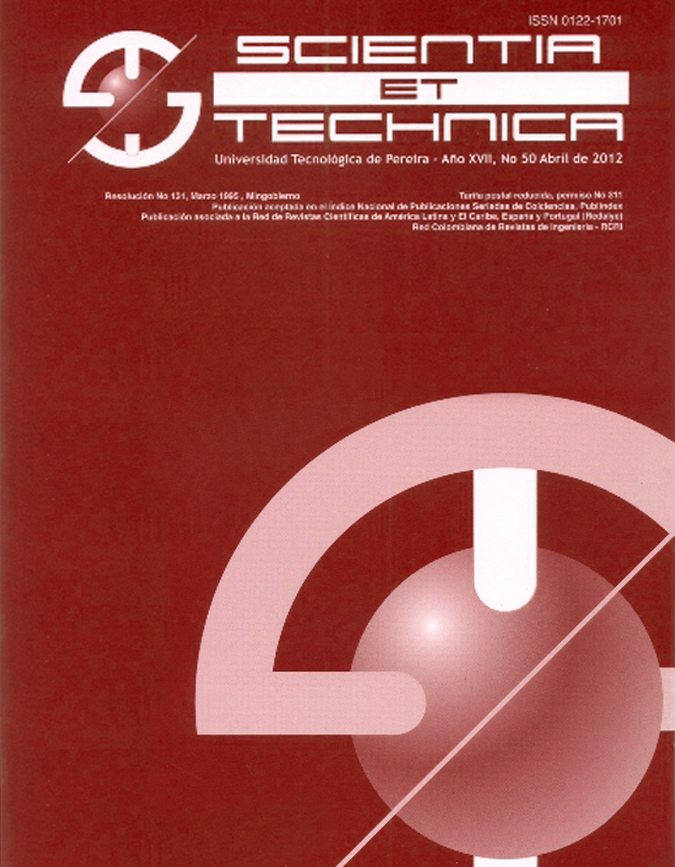Evolution and conduct of the meander “curva el conejo” of magdalena river in the Dorada-Caldas zone
DOI:
https://doi.org/10.22517/23447214.19061Abstract
A multitemporal analysis of the Magdalena River was carried out in the Municipality from La Dorada-Caldas, to obtain a basic model of the evolution of the channel of this drainage in the El Conejo curve. A historical count was made between the years 1924 and 2016, using tools S.I.G. The Magdalena River in the curve El Conejo of this locality, has undergone an abrupt behavior of approximately 1540 meters; Atypical in the evolution of its channel, evidenced mainly in a period between the years 1952 and 1962.
Downloads
References
[1] Brice, J.C. (1981) Stability of relocated stream channels. Technical Report RD-80/158, Federal Highways Administration, 177 p., Washington, DC.
[2] Brookes, A. (1987) The distribution and management of channelized streams in Denmark.
Regulated rivers. Research and Maganement, 1, 3- 16.
[3] Carlos Alberto Guzmán-López (2012): Estructuras de deformación y génesis de sedimentos blandos en la Formación Mesa en el área de la Dorada (Caldas). GEOLOGÍA COLOMBIANA. Edición X Semana Técnica de Geología e Ingeniería Geológica. 37 (1), 10. Bogotá, Colombia.
[4] Jorge Abel Castañeda & Fredy Matínez (1998). Evaluación preliminar de amenazas por inundación municipio de La Dorada. Corpocaldas- Alcaldia de La Dorada, Universidad de Caldas.
[5] Chorley, R.J. y Kennedy, B.A, (1971). “Physical Geography: a systems approach”. London Prentice Hall.
[6] Díaz, E. & Ollero, O. (2005) Metodología para la clasificación geomorfológica de los cursos
fluviales de la cuenca del Ebro.
[7] Downs , P.W. (1992) Spatial variations in river cannel adjusments: implications for channel
management in south-east England unpublished PhD thesis, 340p., University of Southampton.
[8] Dueñas, H. & Castro, G. (1981): Asociación palinológica de la Formación Mesa en la región de Falán, Tolima, Colombia. Geología Norandina. (3) 27-36.
[9] GUERRERO, J., 1993. Magnetostragraphy of the upper part of the Honda Group and Neiva
Formation. Miocene uplift of the Colombian Andes. An abstract of a dissertation submitted in
partial fulfillment of the requirements for the degree of doctor of philosophy in the Department of Geology in the Graduate School of Duke University.
[10]Hooke, J.M. (1997) Styles of channel change, in Thorne, C.R.; Applied fluvial geomorphology for river engineering and management, 237-268, Chichester, Wiley.
[11]KNINGHTON D. Fluvial forms and processes. Arnold Publi. & J. Wiley and sons, London, United Kingdom 1984.
[12]Leopold, L., Wolman, G. and Miller, J. (1964). “Fluvial Process in Geomorphology”. Dover
Publication, Inc. New York.
[13]Olledo, Ballarín & Mora (2006) Cambios en el cauce y el llano de inundación del río Ebro
(Aragón) en los últimos 80 años, 12.50009 Zaragoza.
[14]Porta, J. de, Colombia. Léxico Estratigráfico Internacional. Volumen V, Fasciculo 4to, Paris. 1974.
[15]Rosgen, D.L. (1994) A classification of natural rivers. Catena.
[16]Rosgen, D.L. (1996) Applied river morphology Pagosa, Wildland Hydrology.
[17]Segura-Serrano, L. Conocimiento de la dinámica fluvial como herramienta para la planificación territorial. Caso río Volcán, Buenos Aires, Puntarenas, Costa Rica. Tecnología en Marcha. VI Encuentro de Investigación y Extensión. Pág 12-21.
[18]Thorne, C.R. (1998) Stream reconnaisance bandhook: geomorphological investigation and analysis of river channels Chichester, Wiley.
[19]Van Dijk, W. M., W. I. van de Lageweg, and M. G. Kleinhans (2012), Experimental meandering river with chute cutoffs, J. Geophys. Res., 117, F03023, doi:10.1029/2011JF002314.
[20]Werritty, A. (1997) Short-term clianges in channel stability. In Tliorne, C.R.; Hey, R.D. y Newson, M.D. (Eds.): Applied,fluvial geomorphology ,for river engineering management, 47-65, Chichester, Wiley
Downloads
-
Vistas(Views): 540
- PDF (Español (España)) Descargas(Downloads): 864
Published
How to Cite
Issue
Section
License
Copyright (c) 2018 Scientia et technica

This work is licensed under a Creative Commons Attribution-NonCommercial-ShareAlike 4.0 International License.
Copyrights
The journal is free open access. The papers are published under the Creative Commons Attribution / Attribution-NonCommercial-NoDerivatives 4.0 International - CC BY-NC-ND 4.0 license. For this reason, the author or authors of a manuscript accepted for publication will yield all the economic rights to the Universidad Tecnológica of Pereira free of charge, taking into account the following:
In the event that the submitted manuscript is accepted for publication, the authors must grant permission to the journal, in unlimited time, to reproduce, to edit, distribute, exhibit and publish anywhere, either by means printed, electronic, databases, repositories, optical discs, Internet or any other required medium. In all cases, the journal preserves the obligation to respect, the moral rights of the authors, contained in article 30 of Law 23 of 1982 of the Government Colombian.
The transferors using ASSIGNMENT OF PATRIMONIAL RIGHTS letter declare that all the material that is part of the article is entirely free of copyright. Therefore, the authors are responsible for any litigation or related claim to intellectual property rights. They exonerate of all responsibility to the Universidad Tecnológica of Pereira (publishing entity) and the Scientia et Technica journal. Likewise, the authors accept that the work presented will be distributed in free open access, safeguarding copyright under the Creative Commons Attribution / Recognition-NonCommercial-NoDerivatives 4.0 International - https://creativecommons.org/licenses/by-nc-nd/4.0/deed.es license.



